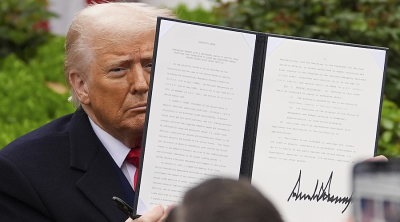
Malaysia achieved the top position in emerging Southeast Asia (SEA) according to the 2022 Milken Institute Global Opportunity Index. The 2022 Milken Institute Global Opportunity Index (GOI 2022) is an assessment to “inform investor and policymaker global investment decisions”, by evaluating an economy’s investment landscape.
As far as having “potential”, this is very much agreeable. That said, although Malaysia’s relative position in the Global Opportunity Index 2022 appears to be good, we must evaluate this critically.
The key categories (or major variables) used as criteria for measurement in GOI 2020 are business perception, financial services, international standards and policy, economic fundamentals, and institutional framework.
The report focused on emerging SEA, which is one of six groups amongst other emerging markets and developing economies (EMDE). The report noted that an influx of capital in SEA has the potential to increase innovation, create jobs, and improve competitiveness.
Although emerging SEA has been shown to fare well against other EMDE in three key areas (strong economic performance, highly qualified workforce, and good integration with the global economy), the report also noted that this “attractiveness” of emerging SEA as a foreign investment destination is especially evident when compared to other EMDE.
In other words, the apparent ranking (as with any rankings) is especially clear in comparison to a (select) group of countries.
Therefore, notwithstanding the accuracy of these measurements, could this ranking simply be an outcome of comparing ourselves with a lower bar?
Singapore, for example, is in the advanced economy group, despite having a similar historical economic/geopolitical starting point as Malaysia.
If the scores have been evaluated fairly (we trust this to be the case), then it might be telling us that other SEA countries within the same EDME benchmark group are also performing generally poorly compared to advanced economies.
Either way, rankings are just that – relative positions to others. You can choose the comparison group to either position your ranking higher or lower.
This is why a global absolute score of the index may provide a better (and realistic) picture of where Malaysia is. The same could be said to the Corruption Perception Index (CPI) where rankings are relative to how other countries are performing, but the absolute score is more objective on how an individual country is performing for all indicators compared to its peers and also across time.
Now, let’s look at some key variables measured for GOI 2022.
The report noted how capital inflows as a share of GDP had declined in emerging SEA during the year 2010, and it appears to show that Malaysia experienced the biggest decline over this period compared to selected EMDE SEA countries.
Specifically, Malaysia experienced a drop from an average of 7.9 percent in 2011-2015 to 3.2 percent in 2016-2020. In contrast, over the same two periods, the Philippines (from 2.3 to 3.3 percent) and Vietnam (from just below 6 percent to around 7 percent) experienced growth.
As mentioned in the report: “Capital inflow volatility was also relatively high in Malaysia, largely driven by the behavior of portfolio investment and (to a lesser extent) bank-related inflows.”
The report showed Malaysia experienced a generally dropping trend (2011-2020) for its cross-border capital inflows. Most notably, the year 2020 appears to record the biggest outflow of portfolio investments since 2011, a reducing foreign direct investment (FDI), reducing bank-related flows, and other private flows.
Given that the objective of the report is to evaluate an economy’s investment landscape, then certainly the reasons for this capital inflow volatility are central to the overall discussion.
The reasons for this trend are likely the same now (perhaps even worsening), in which case, it would be unclear how capital inflow from investments would expect to increase, or how that would translate into better investment opportunities.
Of course, this depends on the type of investment in question, which the report clearly explained.
Foreign portfolio investment (FPI) includes the purchase of securities such as stocks and bonds, while FDI refers to the purchasing businesses and related infrastructures. And FDI’s can be broken further into its subtypes.
On this note, the report showed a significant shift (reduction) in portfolio investments, which could be reflecting lowering interest of Malaysian securities, while at the same time it would appear that there is an increase in foreign ownership of businesses in Malaysia and its infrastructure.
Firstly, looking at FDI as a source of capital inflow without looking deeper into the impacts of increased foreign ownership or stakes in the long-term would be an incomplete picture of structural issues internally.
For example, could this be reflective of poorer capacities for domestic direct investment? Or, could it be reflective of internal issues to produce innovation and drive markets locally?
On the surface, this could be seen as investors having less shorter-term confidence, but seeing the potential for longer-term investments. Perhaps investors see the potential of our geographical location, natural resources, infrastructure, utilities etc. but not so much in Malaysia’s local governance.
Securities depend a lot on how the local economy and policies are being managed, while FDI’s depend a lot on how the business itself is performing. Therefore, it could be reflective of investors having more confidence in places they have more control.
It’s crucial to ask why this could be the case.
Foreign direct investment can happen in various ways and the report clearly shows equity as the major form of FDI. Reinvestments make up the second-largest share of FDI type, whereby profits are reinvested – which is a good sign.
However, we have to also investigate the trend for the third type of FDI i.e., intracompany loans.
The report showed that Malaysia’s cross-border capital inflows (2011-2020) experienced a generally dropping trend but portfolio debt has increased significantly. It appears to be the biggest since 2013.
Although increased access to foreign financial aid is seen positively by companies that need it, it is crucial for Malaysia to investigate if this indicates that its local companies are increasingly seeking external financial help, and if so, why this is happening? Is the support locally insufficient? Or, is access to local support easy, transparent, and fair?
There is also a decreasing FDI in Malaysia’s biggest economic sector: manufacturing.
The GOI 2022 report pointed the following: “inflows into the manufacturing and industry sector, for instance, were relatively large in Vietnam—where they represented about 69 percent of total FDI inflows in 2011–2015 and 68 percent in 2016–2020—but they were relatively small in Malaysia—where they accounted for only about 39 and 35 percent of all FDI over the same two periods”.
According to Malaysia Investment Development Authority (MIDA) report on electrical and electronics (E&E) in 2020, we can see that most of the companies in the various E&E clusters in Malaysia are foreign companies. This could be indicating that these existing manufacturers (or new ones) are going elsewhere to set up their facilities.
Malaysia’s GDP performance for the first quarter of 2021 has shown how the E&E and manufacturing sectors have contributed significantly to the economic resiliency in Malaysia, during the pandemic-driven global economic downturn.
But this situation was (is) a reminder as to why the next paradigm shift has to be moving beyond heavy reliance on FDIs and foreign manufacturing in Malaysia.
It is true that trade will always be important for the country, but the domestic situation calls for increased net high-tech output, especially through the support of micro and small-medium enterprises (MSMEs). Local economic security is crucial for socioeconomic resiliency, especially in times of geopolitical crises.
Anyways, it is worth looking into the effectiveness of the US$250 million customized incentive package which Malaysia launched in 2019 whereby the objective was “to attract foreign investors from Fortune 500 companies and global unicorns dealing with high-end technology, manufacturing, or value-added industries”, as stated in the GOI 2022 report.
Depending on how one defines a “unicorn,” it has been reported by seaasia.co that as of April 2021, there were 17 SEA unicorns, and none of it are from Malaysia. Specifically, it was reported that Singapore has 8, Indonesia 6, Vietnam has 2 and the Philippines has 1.
Sure, Grab was initially Malaysian-owned. We can either be in denial and tell ourselves “At least Grab didn’t go to other countries within the EMDE benchmark group”, or, accept the fact that we lost Grab to Singapore due to weaknesses in our business and investment ecosystem.
Moving on, the report also showed a shift in the source of foreign capital for Malaysia.
For example, when comparing the periods of 2011-2015 and 2016-2020, Malaysia saw a significant increase in FDI from China and Hong Kong while experiencing a declining FDI from Europe.
Singapore is also one of Malaysia’s biggest sources of FDI, and focusing on cross-border mergers and acquisition (M&A) activity, Singapore records the biggest number of transactions accomplished in the region.
Therefore, it would appear that Singaporean investors do see the potential that Malaysia holds, aligned with the findings of the GOI 2022. We (Malaysians) should see the same potential within ourselves, nurture our own local talents, start-ups, MSMEs, and other businesses too.
The variable “Economic Fundamentals”, which captures a country’s macroeconomic outlook, workforce talent, and potential for future innovation and development is also another dimension where it is surprising for Malaysia to rank well globally (again, maybe not bad relative to the EMDE benchmark group), given Malaysia brain-drain issue, and worrying Global Innovation Index (GII) score.
Brain drain has been growing at an average rate of six per cent per annum, and the human flight and brain drain index suggest that Malaysian brain drain has been on the rise throughout 2007 to 2020. Compounding this is the apparent decline in the uptake of STEM (science, technology, engineering, and mathematics) courses by Malaysian student in previous years.
As for innovation, Malaysia’s GII rank has been fluctuating, where it got worst in 2017 at rank number 37, then slightly improved to rank 33 in 2020. But this was still not at level 31 where it was in 2011 – the best position Malaysia achieved within the last decade. Malaysia’s GII rank in 2021 worsened to 36, which is the second-lowest since 2017.
Again, ranks can be misleading. Even in GII, if Malaysia is compared with upper middle-income economies (GII 2021), Malaysia ranks third among 34 countries. We can go deeper into specific variables and argue how Malaysia may or may not be deserving of its GII score, but even without going this far, Malaysia’s historical GII score clearly shows that Malaysia has been in permanent descend since 2013.
As for the variable of “Institutional Framework” which captures the extent to which a country’s institutions support or hamper business activity (transparency, innovation, investors’ rights, public governance etc.), Malaysia’s lowering CPI score objectively (not relatively) challenges this notion.
As reported by Transparency International-Malaysia (TI-M), Malaysia has been observing a downward CPI score trend from a score (out of 100; higher the better) of 53 in 2019, 51 in 2020, and 48 in 2021, effectively dropping Malaysia’s rank from number 51, to 57, and 62 respectively.
Adding salt to the wound, Malaysia scored the worst in Transparency International (TI) Bribe Payers Survey, which reportedly revealed Malaysia as the worst scoring country.
Transparency International reportedly surveyed 3,000 executives from 30 countries on whether a competitor’s bribery had cost them to lose business, and Malaysia took the embarrassing top position with 50 percent of respondents saying yes. Mexico was right behind at 48 percent.
Singapore, unsurprisingly came in second-cleanest at nine percent, fitting to its position as an advanced economy.
Of course, it’s questionable how the respondents (and TI) can prove or verify respondents’ claims. After all, one can assume the worst about others (especially competitors) and blame competition for losing a bid.
It is also understood that CPI does not measure corruption perception in the private sector, but it remains true that high corruption perception and lack of transparency in the public sector do not promote investor confidence.
That said, the report did capture this correctly when it states the following: “…the region underperforms versus other emerging markets and developing economies in the category of Institutional Framework—especially Transparency, which measures both the availability of timely and accurate information about government policies and regulations and the strength of domestic auditing and reporting standards”.
This is nothing new for Malaysia, which is in dire need of crucial institutional reforms.
Perhaps this partly explains the diminishing interest in portfolio investments and preference for FDIs. Investors may be seeing better long-term potential compared to shorter-term investments, and showing a preference in investments in which they have better control.
In contrast, if a country is strong in its economic fundamentals, implements effective and fair policies, and has transparent and empowered institutions, portfolio investments would be expected to increase.
This brings us to the last dimension of “International Standards & Policy” which the Milken Institute refers to as “…how integrated a country is within the international community and the likelihood they will conform to international standards” such as economic openness, tax and regulations, patent and trademark etc.
Malaysia is not known to be deficient in having international standards and policies, but we have to question how some of Malaysia’s racially-driven policies (and what some industries consider as sub-par intellectual property (IP) rights ecosystem) could be inferred as an attractive investment destination – unless of course, if we compare to other countries that are performing poorly compared to advanced economies.
Again, although relative to EMDE benchmark group we appear to be doing good, the fact is that Malaysia has issues on all the criteria measured in the report that would be relatively unfavorable for foreign investors.
In summary, it is likely that the issues that have contributed to the observed dropping trend (2011-2020) for Malaysia’s cross-border capital inflows (as a percentage of GDP) – where the year 2020 appears to be showing the biggest outflow of portfolio investment since 2011, a reducing FDI and shrinking of bank-related flows and other private flows – are still very much prevalent, if not worsening, and therefore, cannot be the same reasons that would attract investments.
Surely Malaysia can adjust its ranking and attractiveness by deciding which countries it compares itself with, but this must be taken with a healthy dose of salt, to bring us back to reality.
All in all, Malaysia does have the resources and all the potential to be a great and prosperous country, and we agree it holds great potential as an investment destination, but only if we tackle key issues and enact crucial reforms.
(Dr Rais Hussin and Ameen Kamal are part of the research team of EMIR Research, an independent think tank focused on strategic policy recommendations based on rigorous research.)
ADVERTISEMENT
ADVERTISEMENT





































